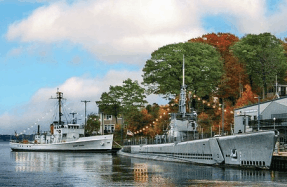KING IN CHICAGO

This is an excerpt from The Shattering: America in the 1960s by Kevin Boyle. The William Smith Mason Professor of American History at Northwestern University, Boyle is the author of the National Book Award–winning Arc of Justice: A Saga of Race, Civil Rights, and Murder in the Jazz Age.
It was hard to say when things went wrong. Maybe when the patrolman pulled over a weaving Buick on Avalon Avenue, in the heart of Los Angeles’s Black neighborhood, and asked the driver, 21-year-old Marquette Frye, to walk a straight line and he offered to do it backward, playing to the crowd that had gathered round, and they laughed, which got the cop’s back up. Maybe when Frye’s mother appeared, screaming at both her son and the patrolman, and the cop arrested her too, manhandling her into the patrol car, and the laughing stopped. Maybe when Frye refused to get into the car with her and the cop hit him in the head and the jeering started. Maybe when the backups arrived, driving the motorcycles onto the sidewalk to split open the crowd, and someone picked up a rock and hurled it at the officers. Or maybe it had started decades earlier, when the authorities in every major city in the nation decided to treat African Americans as if they were a colonized people, the police their occupying army, armed with a power they’d never surrender.
After the Fryes were taken away the rage raced along Avalon, where there were buses to stone, cars to assault, and shop windows to shatter. That night — August 11, 1965 — the Los Angeles police cordoned off the surrounding eight blocks, in hopes that the unrest would play itself out, as it had in Harlem the year before. But the next day was worse, the night cataclysmic. At dusk the crowds took control of the streets across Watts, as the neighborhood was known: sweeping down its business strips, attacking the few whites who happened to be in the area, looting and torching white-owned stores, then driving off the firefighters so the blazes would burn through the night. Around 3 a.m. on August 13 the LAPD tried to reclaim the neighborhood with a massive show of force. But the crowds were larger, and more than willing to meet violence with violence. By morning more than a dozen policemen had been injured, and the streets weren’t close to clear.
Shortly thereafter the mayor formally requested that the governor send in the National Guard. The first of 14,000 heavily armed soldiers began arriving in Watts that evening. Immediately the death toll started to rise: at least 14 African Americans were killed on the troops’ first two nights on the street, more than double the number of Americans killed in Vietnam that week. By August 17 the area had been pacified. But emotions hadn’t. In white neighborhoods people raced to buy guns amid rumors that Black mobs were going to stream across the color line, while Watts burned with talk of the fires next time. Martin Luther King Jr. heard the threats himself during a hastily arranged appearance at a Watts social center on August 18. He’d come at the request of a group of L.A. ministers, who thought his presence might calm the community. It didn’t. “All over America, the Negro must join hands …,” he began. “And burn,” someone shouted from the crowd. King left seriously shaken, and more convinced than ever that his next step had to be out of the South. “If [we] don’t go north,” he told his aide Stanley Levison as he headed home to Atlanta, “we’re damned.”
For the balance of the month King’s advisers worked through their options. Los Angeles was too tense to manage a movement, New York too politicized, Cleveland and Philadelphia not big enough media draws. That left Chicago: three and a half million people,
You’re reading a preview, subscribe to read more.
Start your free 30 days





